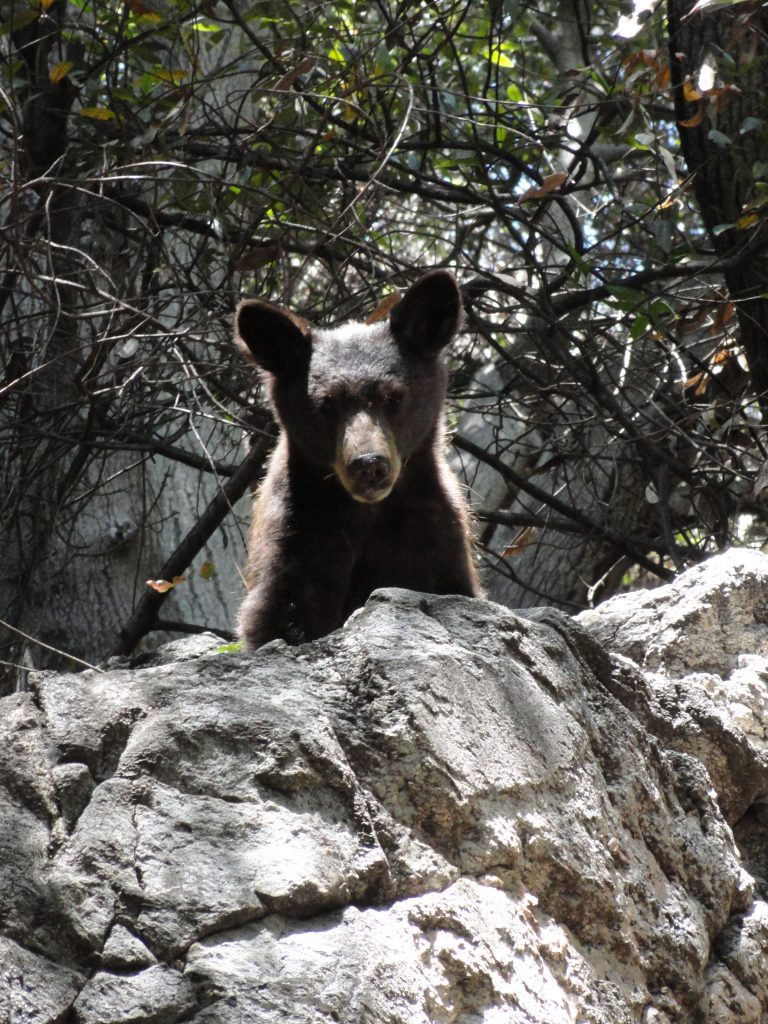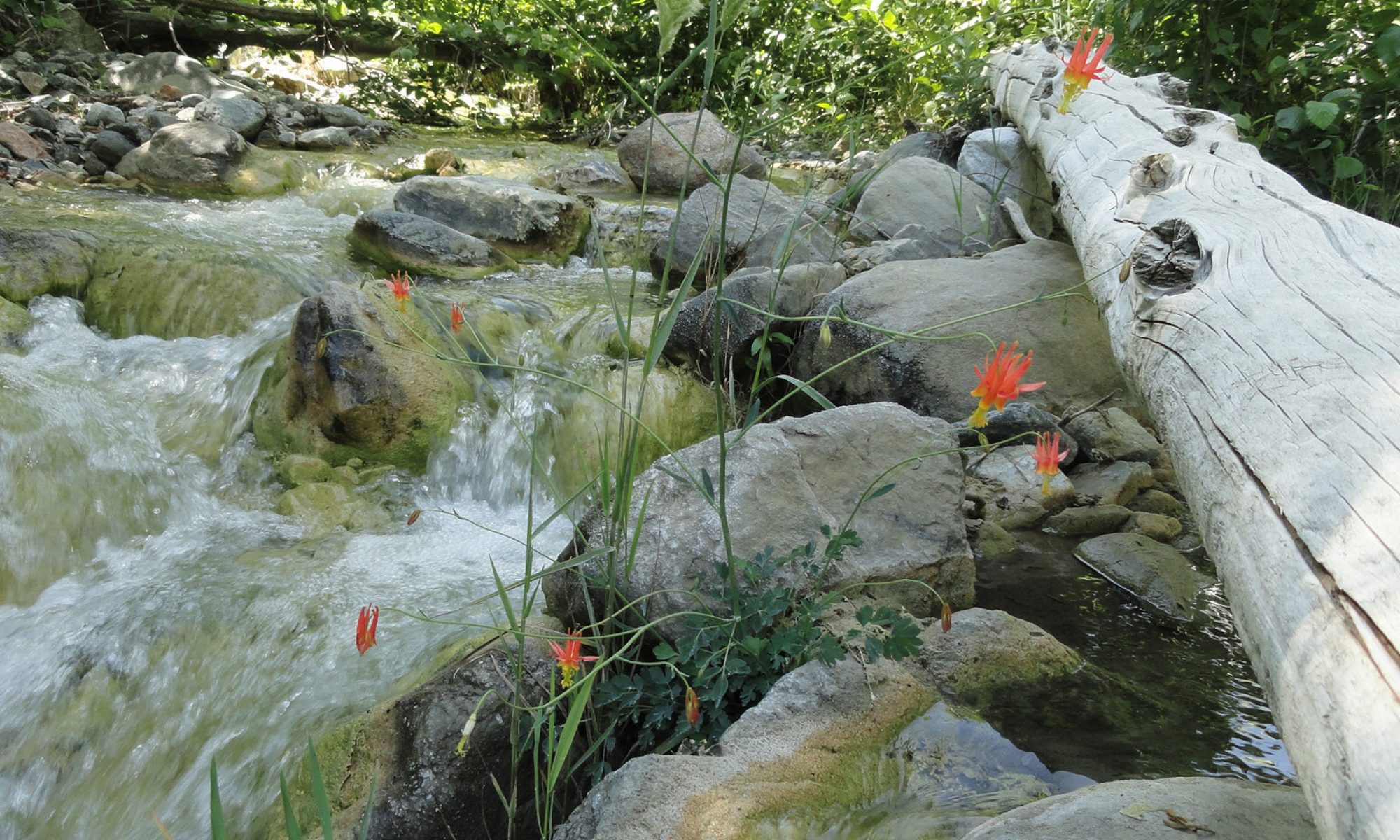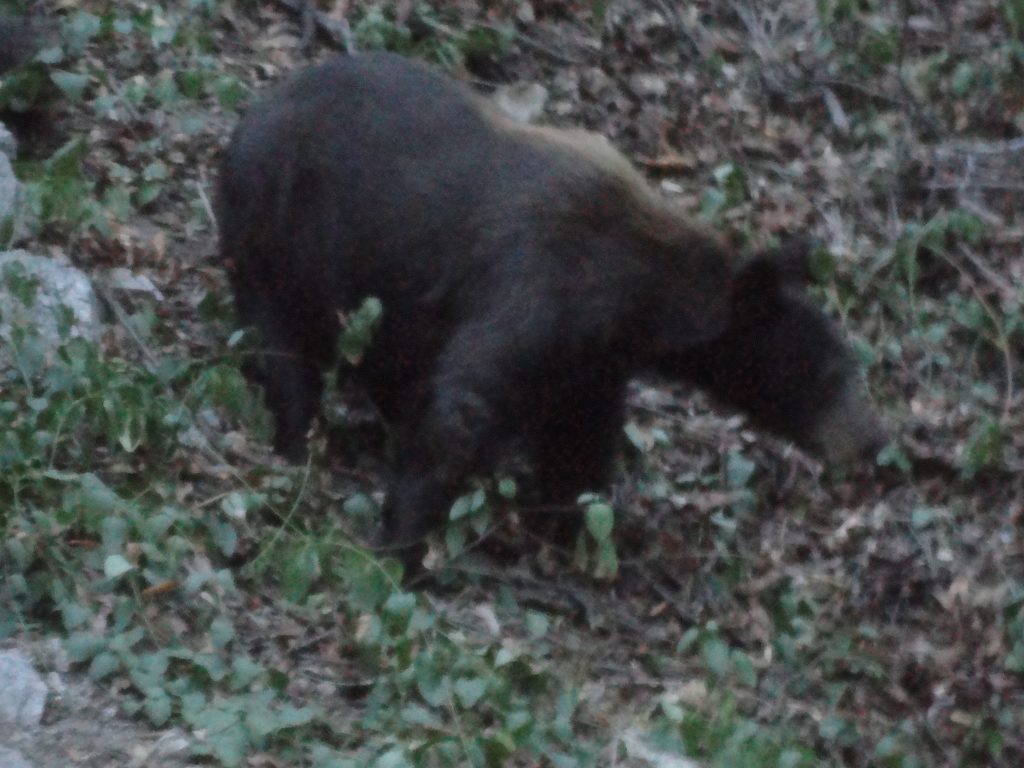
Curious little black bear looks on as repairs are made to the crank telephone phone line.

Hand drawn hiking maps of Chantry Flats and Wrightwood

Curious little black bear looks on as repairs are made to the crank telephone phone line.
The San Gabriel mountains provide habitat for black bears (Ursus americanus californiensis) throughout the year. The accompanying photo was taken through the screen door of a cabin at Fern Lodge just before dark. These elusive animals are seldom seen along the trails that radiate out from Chantry Flats. As a rule, bears will avoid contact with humans if given the chance. However, in the aftermath of a light winter, streams in many of the smaller side canyons are now drying up. This causes much wildlife, including bears, to drop down to lower elevations in search of water. The Big Santa Anita and Winter Creek flow throughout the driest months (September-October-November), becoming the primary source of drinking water for all creatures.

Bears are omnivorous, seeking both plants, insects (grubs and ants) and occasionally small game for food. Right now, their scat can be seen alongside the hiking trails. One of the black bear’s mainstays is manzanita berries, which can be seen abundantly throughout their scat.
Black bears although shy, are very powerful. They are tree climbers and can quickly scale the steepest hillsides if necessary. On the descent, they’re a bit slower and clumsy. As for shelter, bears den in naturally occurring voids of rock and soil. Winter conditions in the San Gabriel mountains are quite mild in contrast to other North American mountain ranges, so deep hibernation is not a part of the local black bear’s lifecycle as it might be further north. Therefore, it’s possible to see a bear any month of the year!

There was a time once when another species of bear roamed the San Gabriels. This was the Grizzly, (Ursus arctos horribilis) now extinct throughout California. Grizzly bears were known to many backcountry travelers of the 19th century as X bears, due to the hourglass shape of lighter colored fur on their backs. When the grizzly bear was aggravated, the light colored fur would stand straight up, sort of the way that dogs do when upset. You can read more about this time of grizzly bears roaming the San Gabriels in John W. Robinson’s “The San Gabriels, Southern California Mountain Country.”
If you are fortunate enough to see a bear in the Big Santa Anita Canyon or Winter Creek, keep your distance and calmness. Should one approach you, stand tall and hold your ground. Clap your hands together and yell as loud as you can to scare it off. Chances are he or she just didn’t see you until your closing distance narrowed way down. Although a bear’s eyesight is not terribly keen, its’ sense of smell is acute. While camping up at Spruce Grove or Hoegees campgrounds, hang your food well out on a tree limb at night. Generally, try to keep your food bag at least 8′ up from the ground and 8′ out from the main trunk of the tree. A bear-proof food storage canister is really the best way to go and a lot easier than finding the perfect tree. Keep your campsite clean and wash your dishes well. No food should ever be stored inside your tent! Remember, bears are afraid of humans, yet will do just about ANYTHING for food.